
Chinese martial arts have captivated the world with their rich history, diverse techniques, and deep philosophical underpinnings. Within this vast landscape, two terms often come up: Kung Fu and Wushu. While both are integral parts of Chinese martial traditions, they are distinct in their origins, purposes, and practices. This article explores the differences between Kung Fu and Wushu, their historical contexts, and their contemporary significance. We will also delve into the broader meaning of Kung Fu beyond martial arts and examine how the Shaolin Temple, a symbol of martial excellence, integrates both traditional and modern practices.
Kung Fu vs Wushu
What is Kung Fu?
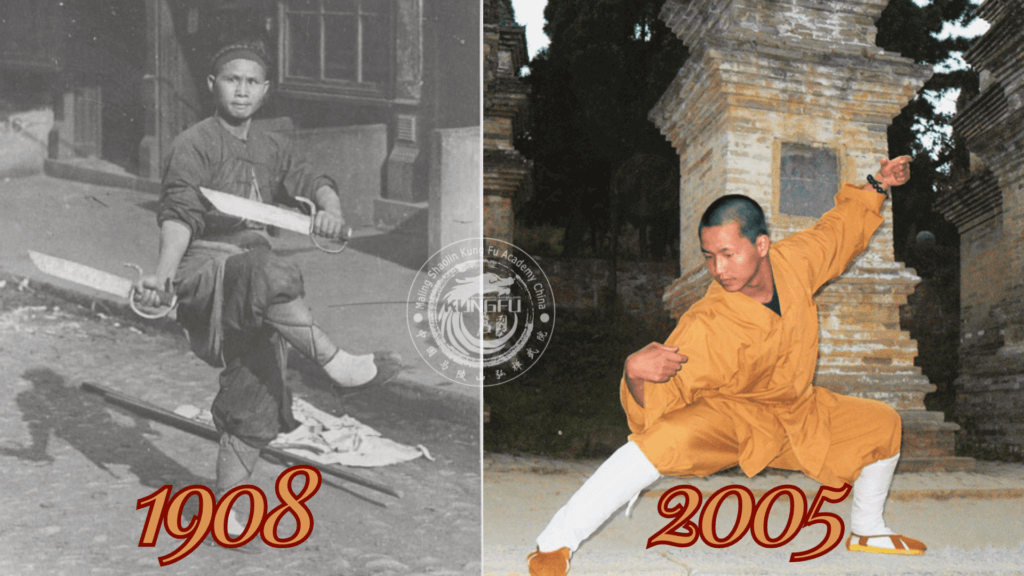
Kung Fu, Gongfu (功夫) in Chinese, is a term that broadly describes the martial arts of China. The term “Kung Fu” literally means “skill achieved through hard work and practice.” This reflects the essence of Kung Fu as both a physical and philosophical discipline, emphasizing patience, endurance, and continuous improvement. Traditional Kung Fu encompasses a wide variety of styles, such as Shaolin, Wing Chun, Tai Chi, and Hung Gar, each with its unique techniques, forms, and training methods.
What is Wushu?
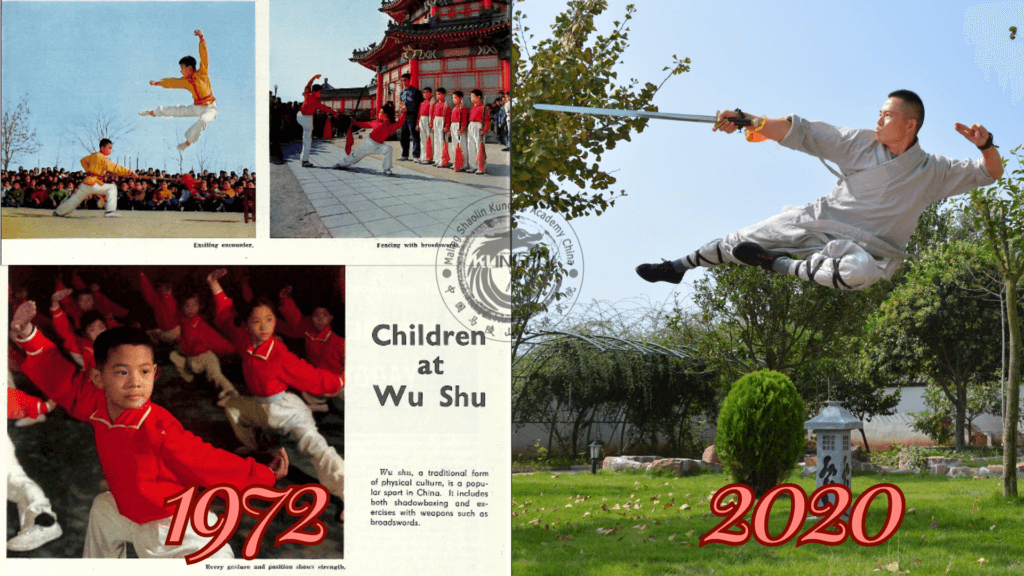
By definition, wushu (武术), translating to “martial arts” in Chinese, is a modern sport developed in China to standardize traditional martial arts practices for competition and performance. Established in the mid-20th century, Wushu combines elements of traditional Kung Fu with a focus on aesthetics, athleticism, and standardization. It includes forms (taolu) and sparring (sanda) competitions. Wushu is characterized by its dynamic acrobatics, fluid movements, and high-intensity routines, making it visually appealing and suitable for both athletic competitions and entertainment.
However, within China, the term wushu has evolved colloquially to encompass traditional Kung Fu as well. For many outside the field, there is no clear distinction between Kung Fu and Wushu. They are seen as the same and often used interchangeably, Wushu being the more commonly used word when referring to almost any form of Chinese martial arts.
How Are They Different?
The primary difference between Kung Fu and Wushu lies in their purpose and practice. Kung Fu is rooted in traditional martial arts, emphasizing self-defense, spiritual growth, and historical techniques. It encompasses a diverse range of styles and practices passed down through generations. Wushu, on the other hand, is more standardized and performance-oriented, focusing on modernized forms designed for competition and display. Now, Wushu is seen as a way to push one’s body to the limit. To attain feats of flexibility, power, and fluidity previously unattained, much like the ever evolving field of Olympic gymnastics. In fact, Wushu may be joining the official Olympic Games in the future. While Kung Fu is deeply connected to Chinese history and culture, Wushu is often seen as a sport and artistic expression.
Is Wushu Still Considered ‘Authentic’ Kung Fu?
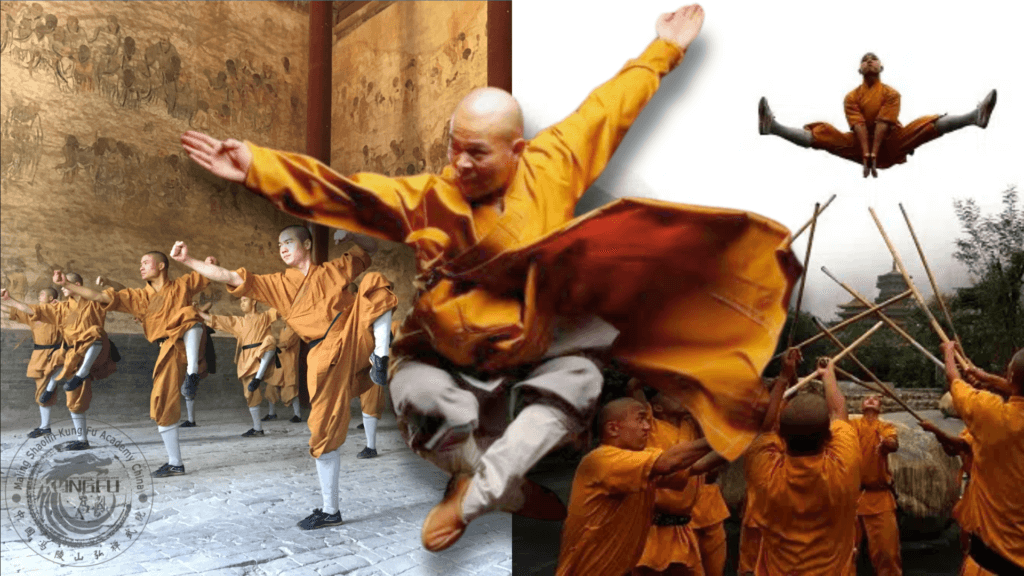
Wushu is a modern interpretation and evolution of traditional Kung Fu. While some traditionalists argue that Wushu lacks the depth and authenticity of classical Kung Fu styles, it is undeniable that Wushu draws heavily from these traditional practices. The techniques, forms, and principles in Wushu are rooted in historical martial arts, even if their execution and emphasis have evolved. Thus, while Wushu may not embody the full traditional essence of Kung Fu, it remains an authentic and valid expression of Chinese martial arts in a contemporary context.
Does the Shaolin Temple Teach Both Wushu and Kung Fu?
Yes, the Shaolin Temple teaches both traditional Kung Fu and modern Wushu. The temple is renowned for its rich history and the preservation of ancient martial arts techniques. At the same time, it embraces the modern aspects of Wushu, incorporating them into its curriculum. This dual approach allows the Shaolin Temple to honor its heritage while adapting to contemporary practices, ensuring the continuation and evolution of Chinese martial arts.
Wushu is highly regarded by Shaolin masters for its rigorous practice and challenging techniques. Wushu incorporates wider and deeper stances, faster movements, and higher jumps, which increase agility, muscle strength, power, speed, and flexibility. Mastering these exaggerated movements makes returning to traditional stances and movements easier and more fluid.
Kung Fu, much like the principles of Buddhism, focuses on self-cultivation. It aims to strengthen the body and mind, not to prove oneself the best or to belittle or even compare other arts or styles. It is about the journey and personal physical and mental health. This is why some practitioners spend their entire lives focused on one style, weapon, or even just one form, continually challenging themselves and growing personally. That is also why they are not typically concerned with the supposed conflicting ideals of Kung Fu vs Wushu. No matter how one attains this growth, it is still growth.
Kung Fu Beyond Martial Arts
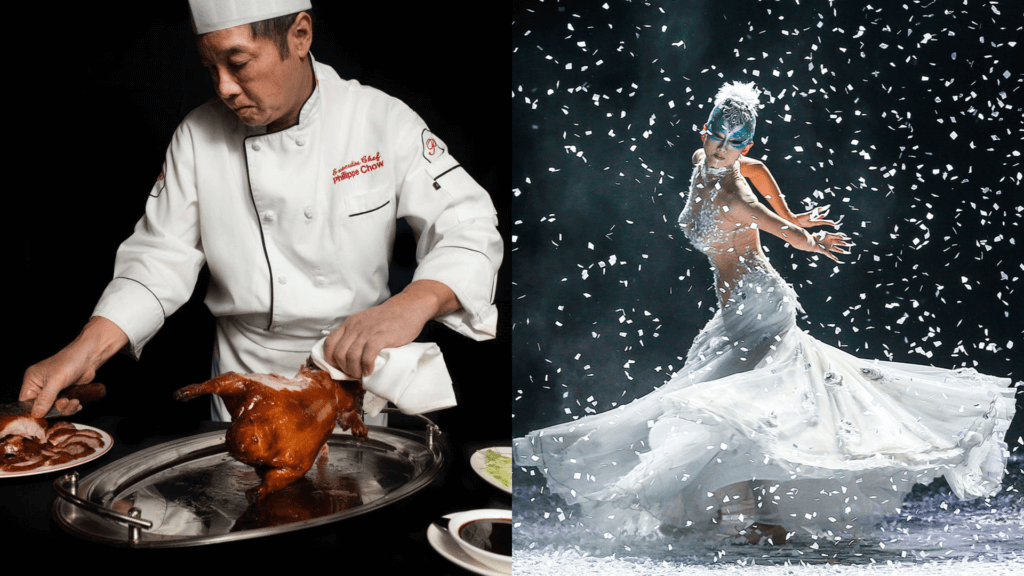
The term “Kung Fu” transcends martial arts and can refer to any skill achieved through hard work and dedication. For example, a skilled chef can be said to have good “Kung Fu” in cooking, and a talented dancer can be praised for their “Kung Fu” in dance. The phrase “gongfu bucuo” (功夫不错) means “good skills” and can apply to various professions and activities. This broader use of the term highlights the cultural value placed on perseverance, practice, and mastery in all areas of life.
Conclusion
Kung Fu and Wushu, while distinct in their practice and purpose, both contribute significantly to the world of Chinese martial arts. Kung Fu represents the traditional, historical essence of Chinese fighting techniques and philosophy, while Wushu embodies the modern, athletic, and performance-oriented evolution of these ancient arts. Together, they illustrate the dynamic nature of Chinese martial arts, honoring the past while embracing the future. Whether through the rigorous training at the Shaolin Temple or the everyday application of “Kung Fu” in various skills, the spirit of hard work and mastery continues to inspire and define Chinese culture.
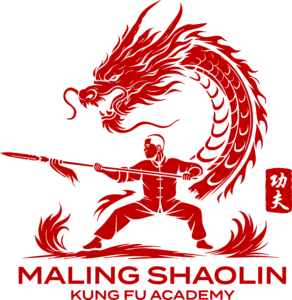
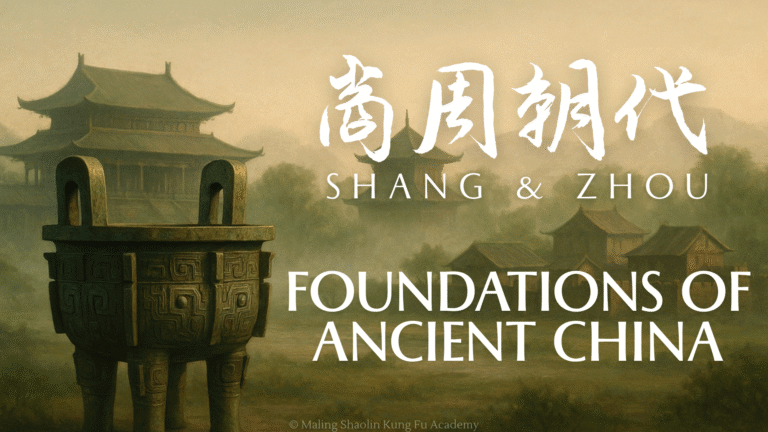

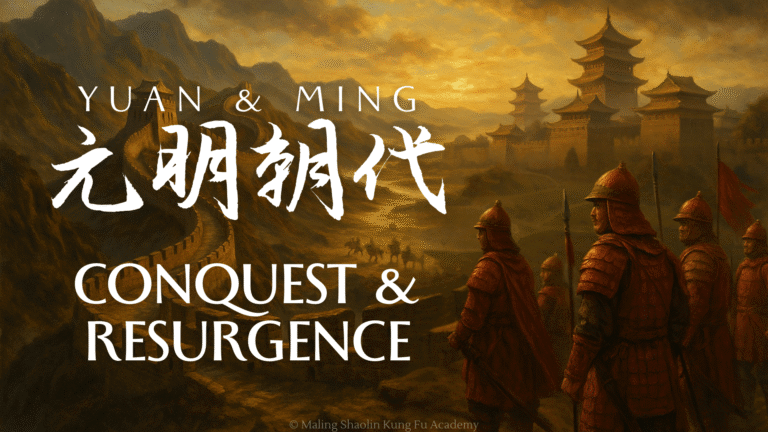
It is perfect time to make a few plans for the longer term and
it is time to be happy. I’ve read this put up and if I may I wish
to counsel you few fascinating things or advice. Maybe you can write subsequent articles
referring to this article. I desire to read even more things about it!
When I initially commented I clicked the “Notify me when new comments are added” checkbox and now each
time a comment is added I get four e-mails with the same comment.
Is there any way you can remove people from that
service? Thanks!
Hello there! This is my first comment here so I just wanted to
give a quick shout out and tell you I genuinely enjoy reading through your posts.
Can you recommend any other blogs/websites/forums that go over the same subjects?
Thanks a ton!